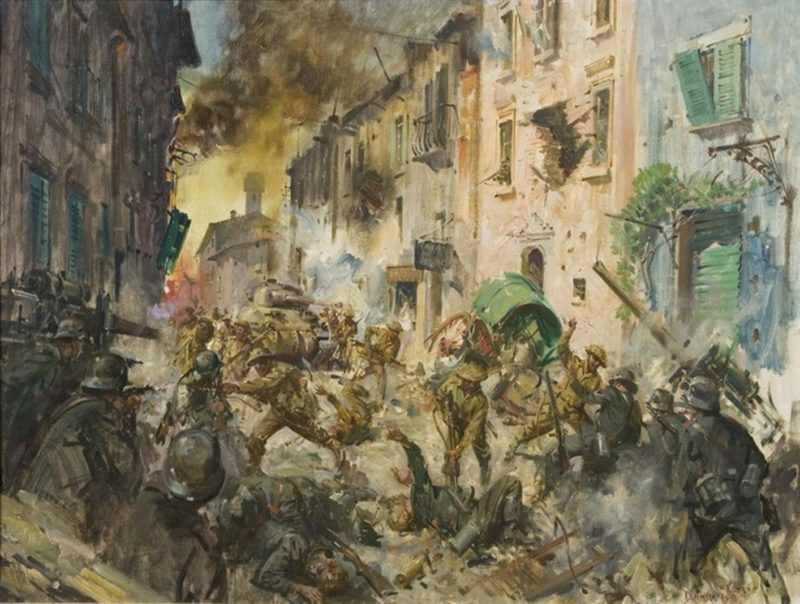Regimental Fraternity

Regimental Fraternity
Throughout the past two centuries of Gurkha service to Britain, Gurkha units have served alongside a wide array of other units from the British and Indian Armies, as well as forces from across the world. Some of these connections have led to long friendships and affiliations which stand to this day.
In April 1945, troops of the 2nd Battalion, the 6th Gurkha Rifles (2/6 GR) fought alongside C Squadron of the 14th/20th King’s Hussars to take the small town of Medicina in northern Italy from last-ditch German defenders. Despite being outnumbered, they took the town, inflicting serious casualties on the defenders. After the battle, the Hussars (antecedents of today’s King’s Royal Hussars) adopted a crossed kukri badge, and the two units became affiliated.
The 10th Gurkha Rifles (10GR) developed an affiliation with the Royal Scots Regiment (later to become part of the Royal Regiment of Scotland) in 1895. This arose from shared training for their Regimental Bands and led to 10GR pipers adopting the ‘Hunting Stewart’ Tartan in 1926. A formal affiliation was given Royal approval in 1950.
The Sirmoor Battalion of Gurkhas developed a strong connection with the 60th Rifles (The Kings Royal Rifle Corps) after they fought side by side at Delhi in 1857, and this connection has continued through several Regimental changes and amalgamations. The 60th Rifles eventually became part of the Royal Green Jackets, and then today’s The Rifles, while the Sirmoor Battalion went on to become the 2nd Gurkha Rifles and then part of today’s Royal Gurkha Rifles.

